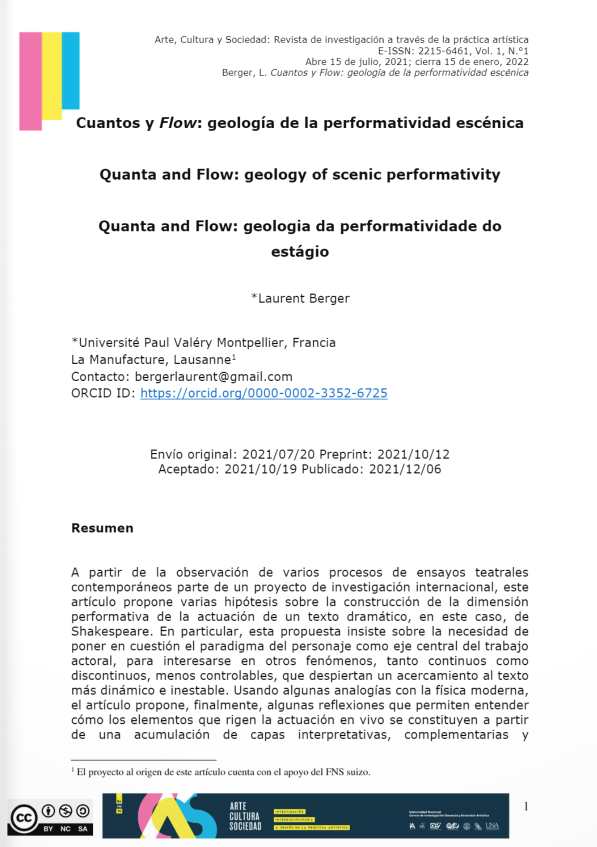Quanta and Flow: geology of scenic performativity
DOI:
https://doi.org/10.15359/acs.1-1.2Keywords:
Performance, Acting, Stage Direction, Shakespeare, Quantum TheoryAbstract
Based on the observation of several contemporary theatrical rehearsal processes, part of an international research project, this article proposes different hypotheses on the construction of the performative dimension of the acting of a dramatic text, in this case, Shakespeare’s. Particularly, this proposal insists on the need to question the paradigm of the character as the central axis of the acting work, in order to get interested in other phenomena, both continuous and discontinuous, less controllable, that awaken a more dynamic and unstable approach to the text. Using some analogies with modern physics, the article finally proposes some reflections that allow us to understand how the elements that govern live performance are constituted from an accumulation of interpretative layers, complementary and contradictory, revealed by the rehearsal process, and how the actor can circulate physically and mentally within these ambivalent layers to generate a type of performance that offers Shakespeare a theatrical modernity in accordance with its potential.









